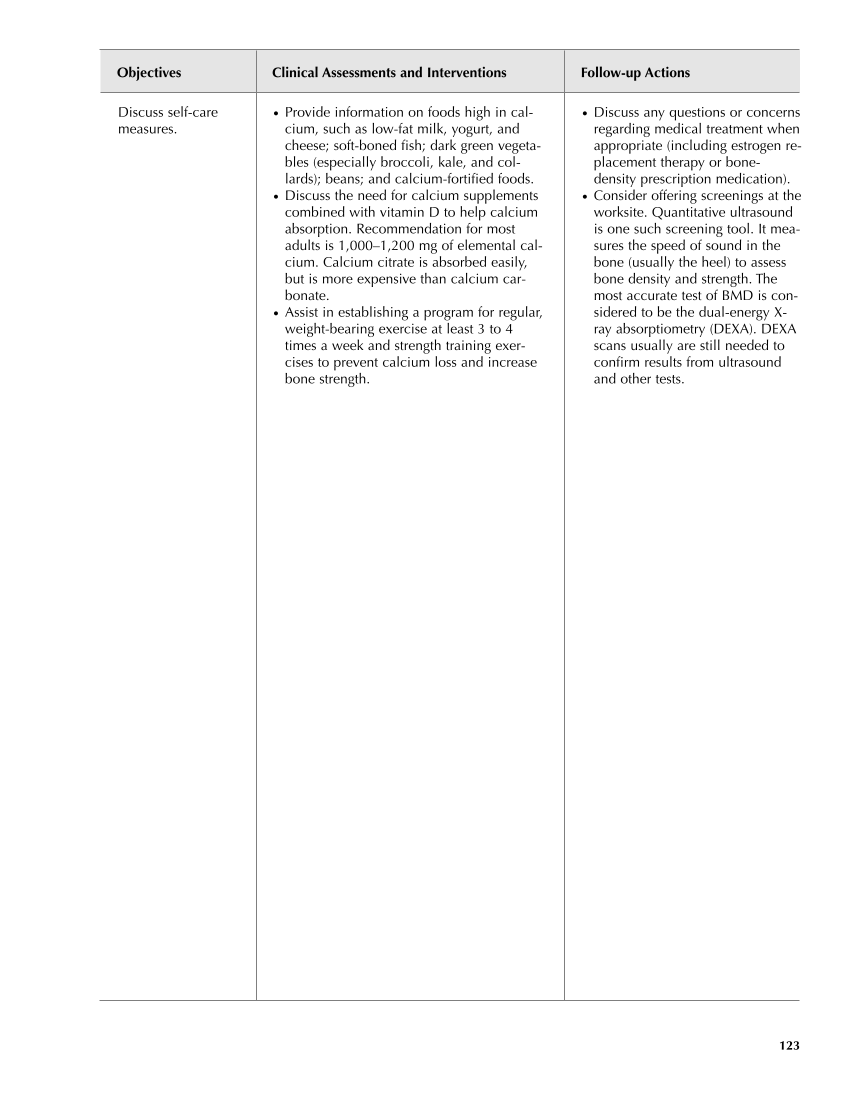● Discuss any questions or concerns regarding medical treatment when appropriate (including estrogen re- placement therapy or bone- density prescription medication). ● Consider offering screenings at the worksite. Quantitative ultrasound is one such screening tool. It mea- sures the speed of sound in the bone (usually the heel) to assess bone density and strength. The most accurate test of BMD is con- sidered to be the dual-energy X- ray absorptiometry (DEXA). DEXA scans usually are still needed to confirm results from ultrasound and other tests. Objectives Clinical Assessments and Interventions Follow-up Actions 123 Discuss self-care measures. ● Provide information on foods high in cal- cium, such as low-fat milk, yogurt, and cheese soft-boned fish dark green vegeta- bles (especially broccoli, kale, and col- lards) beans and calcium-fortified foods. ● Discuss the need for calcium supplements combined with vitamin D to help calcium absorption. Recommendation for most adults is 1,000–1,200 mg of elemental cal- cium. Calcium citrate is absorbed easily, but is more expensive than calcium car- bonate. ● Assist in establishing a program for regular, weight-bearing exercise at least 3 to 4 times a week and strength training exer- cises to prevent calcium loss and increase bone strength.
Purchased from OEM Press by (ge corporate access). (C) 2013 OEM Health Information, Inc. All rights reserved.












































































































































































































































































































































































































































